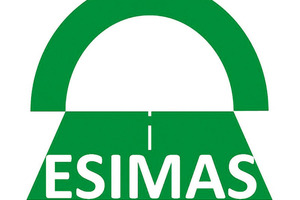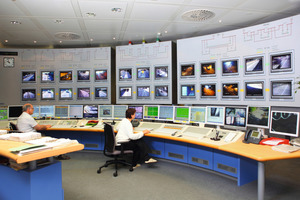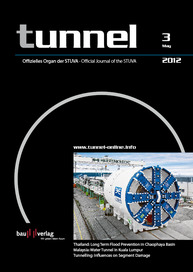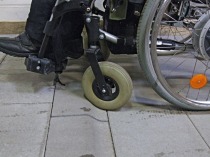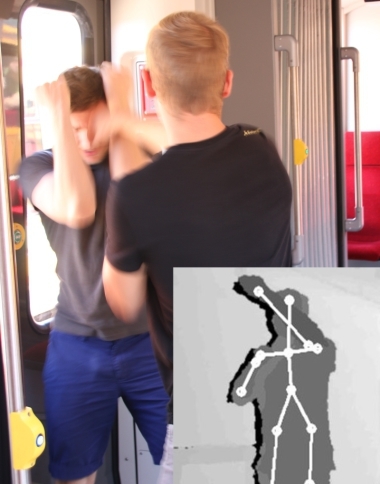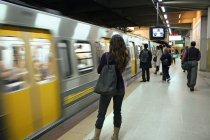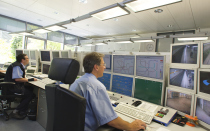STUVA News
On January 19, 2012, the joint ESIMAS project was inaugurated at the Federal Highways Research Institute (BASt). ESIMAS (Echtzeit-Sicherheits-Management-System) stands for Real Time Safety Management System. Its aim is to develop an innovative identification and expert system, which supports control centre personnel in monitoring tunnels 24/7.
In order to assure road tunnel safety, tunnels in excess of 400 m are constantly monitored by a tunnel control centre. The flood of individual data that is received there such as camera images and numerous sensor data must be permanently processed and assessed by the staff. The ESIMAS project intends coming up with new methods for supporting control centre personnel (Fig. 1).
Based on ESIMAS data analysis and evaluation in future it will be possible to identify incidents affecting safety such as fire in the tunnel reliably and in time. In the event of a serious incident ESIMAS will provided recommendations on how to deal with it to the control centre personnel as well as the emergency services (Fig. 2). Based on these recommendations measures can be undertaken quickly and in a targeted manner.
The innovative approach adopted by ESIMAS is geared to holistic appraisal of all individual data and their automatic processing and evaluation. In this way precise data will be available in real time in future relating to the current safety level in the tunnel. As a result the control centre will be able to respond speedily to protect motorists. New detection technologies such as infra red technology or vehicle silhouette identification will be introduced to back the system up.
The project will run until December 2014. The following partners are involved alongside the STUVA:
• Federal Highway Research Institute (BASt), project management
• ave Verkehrs- und Informationstechnik GmbH
• Institute of Road and Traffic Engineering (isac) of the RWTH Aachen
• OSMO-Anlagenbau GmbH und Co. KG
• Planung Transport Verkehr AG (PTV AG)
• Strehle & Partner Ingenieure GbR
• Institute für Mediatechnik at the Ilmenau University for Applied Sciences
STUVA analyses the current Level of Development of barrier-free Solutions in Public Commuter Transportation in Germany
Mobility is numbered among people’s basic needs. Improving the chances of mobility for all people, including those restricted in their movements, by means of public commuter transportation represents a significant socio-political target that enjoys general approval in Germany today. The creation of accessibility in public commuter transportation is an important factor to enable self-determining and equal participation in society. Barrier-free accessibility of public commuter transportation in particular improves everyday mobility. Thus sufficient assurance of accessibility by means of inclusive measures (“design for all”) is an important task. Towards this end social, economic, technical and operational considerations must be contemplated.
In the research project FE.872/2011 Barrier-free Public Commuter Transportation in Germany: Persons with restricted Mobility in Public Commuter Transportation – Analysis of the current Level of Development of barrier-free Solutions” the STUVA identifies and examines solutions for barrier-free accessibility provided by German transport companies. The project is sponsored by the Federal Ministry of Transport, Building and Urban Development (BMVBS) and the VDV-Förderkreis (Verband Deutscher Verkehrsunternehmen – Association of German Transport Companies – circle of sponsors). An initial report was completed in early 2003 and the results published in the VDV’s Blue Book Series.
During the past 10 years there have been substantial improvements in accessibility thanks to new technical and organisation solutions. This was in no small measure due to the effects brought about by amending the law and the legal position governing barrier-freedom e.g. legislation granting equality to handicapped people and the associated modifications to other laws. As a consequence an updated study is intended to present the latest state of play. In this way a comprehensive collection of exemplary solutions is to be compiled. It will first and foremost be made available to those engaged in public commuter transportation on the political, administrative or technical side taking the form of a large number of exemplary solutions presented in image and text. Expert knowledge and awareness of the problem are to be improved among insiders as well as the general public thus enabling concrete programmes and measures to be implemented more easily.
The outcome of these systematic investigations will also lead to the recognitions being publicised on a comprehensive scale both nationally and internationally. As a consequence the results of the study are to be published by the VDV in the form of a book appearing in the Blue Book Series in German and English.
Research Report on the STUVA Project “Measures for overcoming Emergency Situations encountered by the Disabled in Public Buildings”
The STUVA has completed the research project “Organisational and structural Measures to overcome Emergency Situations of physically and sensorically handicapped People in Tower Blocks and Public Buildings with a high Frequency of Visitors”. The research results were published recently in the Frauenhofer IRB-Verlag. Further details are available by accessing http;//www.baufachinformation.de/artikel.jsp?v=237055.
The research project was aimed at arriving at greater consideration of the needs of handicapped persons in overcoming emergency situations thus climbing a further step in the ladder leading to holistic accessibility. In this connection economic and design-related demands (e.g. relating to protected buildings) have to be observed quite apart from the needs of other users.
The research project was sponsored by funds provided by the “Zukunft Bau” research initiative of the Federal Institute for Building, Urban and Regional Research at the Federal Ministry of Transport, Building and Urban Development (BMVBS). The project linked 2 sectors of topics, which have represented significant fields of research for the STUVA for many years:
• Considering the needs of disabled people in the spheres of planning, building and utilisation of buildings and
• Concepts for overcoming emergencies through structural and operational measures (especially fire protection)
Through the Disability Equality Act (Behindertengleichstellungsgesetz) the state has committed itself to ensuring that what it builds is accessible. However implementation of holistic principles on barrier-free planning and constructing in the case of federal buildings has so far only pursued the aim of making them accessible as part of the practice of everyday use. So far barrier-free use in cases of emergency has not been specifically dealt with.
If residents or other users of a building are restricted in their sensoric, cognitive or motoric capabilities, manifold problems can ensue should an emergency occur. There are certain groups of persons for example, who are incapable of responding to an alarm should it be sounded without special systems. Should certain harmful incidents occur, systems, which normally serve barrier-free accessibility, are possibly unavailable (e.g. lifts in the event of fire) thus calling for alternative evacuation routes or measures. Should these be lacking, the search for a suitable evacuation route or protective room can be life-threatening.
Within the scope of the investigation both structural and organisational measures were examined with regard to their suitability. As far as the structural measures were concerned, such things as marking evacuation and rescue routes taking the two-sense principle into account regarding the ability to locate and utilise emergency systems as well as innovative technical solutions, such as e.g. safety lifts, which can be used in the event of fire. Essentially first of all possibilities for self-rescue are to be targeted. Should self-rescue be impossible for technical, economic or individual reasons, then rescue by third parties must be resorted to or if need be organisational measures must compensate the lack of structural measures.
Dr.-Ing. Karl Morgen turns 60
In March 2012, Dr.-Ing. Karl Morgen (Fig. 3) celebrated his 60th birthday. Dr. Morgen is the managing partner of the WTM ENGINEERS office in Hamburg and a member of the STUVA board since 2003; he has been 1st deputy chairman since 2005.
The STUVA team would like to express their best wishes to him on this occasion. We are delighted to be able to offer these congratulations at a time when the WTM office is enjoying so much success and trust it will continue to steer this course just as capably in future as well. We are happy to have Dr. Morgen as a member of our STUVA circle and would like to take the opportunity to thank him for his involvement on behalf of the STUVA.

